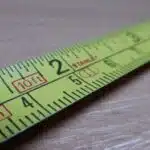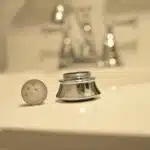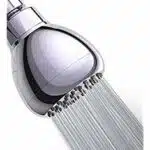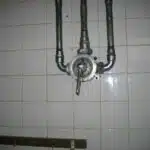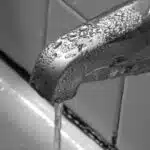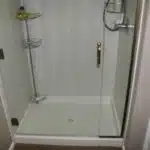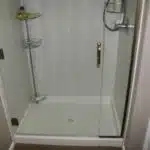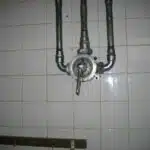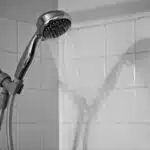As plumbing engineers, we understand the importance of measuring the GPM (gallons per minute) flow rate of faucets and showers. It not only helps in determining the water usage but also assists in identifying any potential leaks or inefficiencies in the plumbing system. In this article, we will guide you through the process of measuring the GPM flow rate of a faucet or shower.
Measuring the GPM flow rate is an important task for anyone who desires to conserve water and reduce their utility bills. It is a simple process that can be carried out with minimal tools and knowledge. By knowing how much water is flowing through your fixtures, you can make informed decisions about your water usage and identify areas where improvements can be made. In this article, we will provide step-by-step instructions on how to measure the GPM flow rate of a faucet or shower using different methods so you can choose which one works best for your needs.
Understanding The Importance Of Measuring Water Flow
Water is a valuable resource, and it is important to use it responsibly. Calculating water usage can help us better understand how much water we are using and where we can reduce waste. This is especially true when it comes to faucets and showers, as these are common sources of water waste in households.
Reducing water waste not only helps the environment but also saves money on water bills. Measuring the flow rate of a faucet or showerhead is an essential step in identifying areas for improvement in terms of water conservation. By measuring the flow rate, homeowners can determine if their fixtures are using more water than necessary and make adjustments accordingly.
In addition to saving money and reducing waste, measuring the flow rate of faucets and showers can also improve their performance. Understanding how much water is flowing through a fixture allows homeowners to select models that match their needs and preferences. Ultimately, by measuring flow rates, individuals can take steps towards responsible water usage and contribute to a more sustainable future. With this understanding in mind, let’s explore what gpm is and why it matters when it comes to measuring faucet and shower flow rates.
What Is Gpm And Why Does It Matter?
- Gallons per minute, or GPM, is a term used to describe the rate of flow of water through a faucet or shower.
- It is an important measurement when it comes to selecting the best plumbing fixtures for a given situation.
- To measure GPM, a bucket is placed under a running faucet or shower for a given amount of time, then the amount of water collected is measured in gallons.
- Knowing the GPM flow rate of a faucet or shower helps to ensure the right amount of water is used in order to conserve water and energy costs.
- Low flow fixtures can be used to reduce GPM, thereby reducing water consumption while still providing a satisfactory flow of water.
- Additionally, the GPM flow rate of a faucet or shower can be used to determine the amount of hot water that can be used before it runs out, ensuring that hot water is not wasted.
Gpm Basics
As plumbing engineers, it is important to understand the basics of GPM or gallons per minute. Knowing the GPM flow rate of a faucet or shower is significant in determining its water efficiency and consumption. Measuring accuracy is essential in obtaining precise GPM readings. The use of a flow meter or pressure gauge can help achieve this accuracy.
Common challenges in measuring GPM include the presence of debris or sedimentation that can affect the accuracy of the reading. Furthermore, fluctuations in water pressure can also impact the results obtained. It is vital to ensure that all fixtures are free from any clogs or blockages before measuring GPM to avoid inaccurate readings.
In conclusion, understanding the basics of GPM and how to measure it accurately is crucial for plumbing engineers and anyone interested in conserving water. Being aware of common challenges and taking necessary precautions can help obtain accurate results, leading to efficient water usage and conservation efforts.
Gpm In Faucets/Showers
As plumbing engineers, we are concerned with ensuring that the water flow in faucets and showers is efficient while minimizing wastage. Understanding GPM or gallons per minute is critical in achieving this goal. Measuring accuracy is necessary to obtain precise GPM readings, and it’s crucial to use the right tools such as a flow meter or pressure gauge.
Faucets typically have an average flow rate of 1.5-2.2 GPM, while showers range from 1.5-2.5 GPM depending on factors such as water pressure and the showerhead type. It’s essential to measure GPM accurately for faucets and showers as they contribute significantly to water consumption in buildings. Inaccurate measurements can lead to wastage and higher utility bills.
To measure GPM in faucets/showers, it’s crucial to ensure that all fixtures are free from any clogs or blockages before measuring GPM to avoid inaccurate readings. We should also consider fluctuating water pressure when taking measurements because it can affect the results obtained. By understanding how GPM works, we can provide more efficient systems that conserve water usage while still providing adequate service for our clients’ needs.
Benefits Of Knowing Gpm
Understanding GPM is essential for plumbing engineers because it allows us to design and implement water systems that are efficient, reliable, and sustainable. By measuring the flow rate of faucets and showers accurately, we can identify areas where wastage occurs and implement solutions that conserve water usage without compromising functionality. The advantages of knowing GPM extend beyond reducing utility bills; it also promotes environmental responsibility by conserving a precious resource.
One of the most significant applications of knowing GPM is in designing water systems for commercial buildings. With accurate GPM measurements, we can determine the appropriate size of pipes, valves, and fixtures needed to ensure optimal performance while minimizing leakage or blockages. In addition, understanding the flow characteristics of different fixtures allows us to select those that meet building requirements while maintaining compliance with local codes and regulations.
Another advantage of knowing GPM is in troubleshooting plumbing issues. When dealing with low pressure or inconsistent flow rates, measuring GPM can help us identify the source of the problem quickly. For example, if a showerhead has a lower than expected flow rate, we can use a flow meter to determine whether it’s due to clogging or an issue with water supply pressure. By addressing such issues promptly, we can prevent further damage to plumbing systems while ensuring customer satisfaction.
In summary, knowing GPM has numerous benefits for plumbing engineers in terms of designing efficient water systems for commercial buildings and troubleshooting plumbing problems effectively. It’s essential to use accurate measurement tools when determining GPM values for faucets and showers to avoid wastage and higher utility bills. By incorporating this knowledge into our practice as plumbing engineers, we can provide better service while promoting environmental responsibility through water conservation measures.
Tools Needed For Measuring Gpm
The accuracy of measurements is critical in plumbing. It ensures that you get the right data to make informed decisions when installing, repairing or maintaining the plumbing system. When measuring GPM flow rate of a faucet or shower, it’s important to use tools designed for this purpose. One such tool is a bucket. However, not all buckets are created equal.
Types of buckets: There are two main types of buckets – standard and calibrated buckets. A standard bucket is an ordinary household bucket that doesn’t have any markings for measuring volume accurately. On the other hand, calibrated buckets are specifically designed for accurate volume measurement, and they have markings on their sides to indicate volume levels.
Accuracy of measurements: The accuracy of your GPM measurement will depend on several factors, including the type of bucket you use, how well you measure the time it takes to fill up the bucket and the temperature and pressure of water flowing from the faucet or showerhead.
To ensure maximum accuracy in your GPM measurements, use a calibrated bucket designed for measuring volume accurately. Additionally, ensure that you measure time with precision using a stopwatch or timer, and record temperature and pressure readings before starting your measurement process.
Next up is a step-by-step guide to measuring GPM with a bucket.
Step-By-Step Guide To Measuring Gpm With A Bucket
To measure the flow rate of your faucet or shower, you can use a simple method known as the bucket test. This method involves using a bucket to collect water for a set amount of time and then calculating the flow rate based on the volume collected. The first step is to choose an appropriate bucket size that will hold enough water to make an accurate measurement. A five-gallon bucket is commonly used for this purpose.
Once you have chosen your bucket size, place it directly under the faucet or showerhead so that all of the water flows into it. Turn on the water at full volume and let it run for exactly one minute. After one minute, turn off the water and measure how much water is in the bucket using a measuring cup or similar device. To calculate the flow rate in gallons per minute (GPM), divide the amount of water collected by 1 minute.
The formula for calculating flow rate is: Flow Rate = Volume ÷ Time. For example, if you collected 3 gallons of water in one minute, your flow rate would be 3 GPM. Keep in mind that this method provides an estimate of your flow rate and may not be completely accurate due to factors such as variations in pressure and temperature. To get a more precise measurement, you can use specialized flow rate measurement devices which will be discussed in the next section.
Using Flow Rate Measurement Devices
- When selecting a flow rate measurement device, it is important to consider the type of faucet or shower being tested to ensure the device is compatible.
- When inspecting the faucet or shower, it is important to check for any obstructions that may affect the flow rate measurement.
- Flow rate measurement devices should be calibrated before use in order to achieve accurate results.
- To measure the flow rate, the device should be positioned in the stream of water and the time for a certain quantity of water to pass should be recorded.
- The flow rate can then be calculated from the recorded time and the known volume of water.
- The flow rate should be measured several times to ensure accuracy and consistency of results.
Choosing A Flow Rate Measurement Device
When it comes to measuring the flow rate of a faucet or shower, choosing the right device is essential. There are several types of devices available in the market for measuring flow rates, including flow meters, pressure gauges, and bucket and stopwatch methods. Each of these devices has its own strengths and weaknesses, and choosing the right one depends on your specific needs.
Flow meters are considered to be the most accurate devices for measuring flow rates. They work by measuring the volume of water passing through a pipe or faucet over a certain period of time. However, they can be expensive and may require professional installation. Pressure gauges are another option but are less accurate than flow meters. The bucket and stopwatch method is the least accurate but can be used as a quick estimate.
When comparing accuracy between devices, it’s important to consider factors like installation costs, maintenance requirements, and ease-of-use. While flow meters may be the most accurate option, they can also be costly to install and maintain. On the other hand, pressure gauges may be less accurate but require minimal maintenance. Ultimately, choosing the right device depends on your individual needs and budget.
As a plumbing engineer, it is my recommendation that you consider all available options when selecting a device for measuring flow rates. Carefully weigh factors like accuracy, cost, installation requirements, and maintenance needs before making your decision. By doing so, you’ll ensure that you have an effective tool for accurately measuring gpm flow rates in faucets or showers that will serve both you and those you serve in your plumbing projects.
Inspecting The Faucet Or Shower
As a plumbing engineer, it’s important to ensure that the faucet or shower you’re measuring the flow rate of is functioning properly. One way to do this is by using an inspecting technique to identify any potential issues that may affect the accuracy of your flow rate measurement. Before installing any flow rate measurement device, take the time to inspect the faucet or showerhead thoroughly.
Start by examining the faucet or shower for signs of damage or wear and tear. Look for cracks, leaks, corrosion, and other visible damage that could affect water flow. If there are any issues, address them before proceeding with your measurements. Additionally, check for any dirt or debris that may be blocking the flow of water.
Next, turn on the faucet or shower and observe its performance. Is water flowing smoothly without interruptions? Are there any unusual sounds like rattling or hissing? These observations can help you identify potential issues that may affect your flow rate measurement accuracy. For example, if you notice uneven water pressure while observing the faucet’s performance, it could indicate an issue with clogged pipes.
In conclusion, inspecting the faucet or shower before using a flow rate measurement device is crucial in ensuring accurate readings. As a plumbing engineer serving others, taking these extra steps will not only improve your work but also lead to customer satisfaction and safety. Remember to always prioritize safety and quality when working on plumbing projects.
Measuring The Flow Rate
Measuring the Flow Rate is one of the essential tasks that a plumbing engineer must do to determine the efficiency of water supply systems. To measure the flow rate, one needs to use flow rate measurement devices such as flow meters or pitot tubes. However, before using these devices, it is essential to ensure their measuring accuracy by considering several factors affecting flow rate.
One crucial factor that affects the accuracy of flow rate measurement is pipe size and shape. The pipe’s diameter can affect the speed and pressure of water flowing through it, which ultimately affects its flow rate. Additionally, any bends or kinks in the pipes can cause turbulence and restrict water flow, leading to an inaccurate measurement of the flow rate.
Another critical factor that affects flow rate measurement accuracy is fluid density and viscosity. Fluids with higher densities and viscosities tend to move more slowly through pipes than those with lower values. Therefore, it is crucial to consider fluid properties when measuring the flow rate accurately.
As a plumbing engineer serving others, it is vital always to prioritize measuring accuracy when using flow rate measurement devices. By considering factors such as pipe size and shape and fluid density and viscosity when measuring the flow rate, you can provide efficient solutions for your customers’ plumbing needs.
Measuring Gpm With A Pressure Gauge
Flow rate measurement devices are an essential tool for any plumbing engineer. However, the accuracy of these devices can often be called into question, leading to costly and time-consuming troubleshooting. Fortunately, there is a way to measure the flow rate of a faucet or shower with greater accuracy – using a pressure gauge.
Pressure gauges offer a more reliable method of measuring flow rate than many other measurement devices. They work by measuring the pressure drop across a known flow restriction, such as a valve or orifice plate. By calibrating the gauge correctly, it is possible to obtain accurate readings of flow rate.
To use a pressure gauge for measuring flow rate, there are some important steps that should be followed. Firstly, ensure that the gauge is calibrated correctly and has been installed in accordance with manufacturer instructions. Secondly, identify a suitable location for the gauge – this should usually be at least 5-10 pipe diameters downstream from any fittings or valves that could cause turbulence. Finally, take multiple readings of the gauge and calculate an average value to ensure accuracy.
When troubleshooting common measurement errors with pressure gauges, it is important to consider factors such as fluid viscosity and temperature. These can affect both the accuracy of the gauge itself and the interpretation of its readings. By taking these factors into account, it is possible to obtain more reliable measurements and avoid costly mistakes when working on plumbing systems.
Next section topic: How to Measure GPM on a Showerhead
How To Measure Gpm On A Showerhead
Measuring the gallons per minute (gpm) flow rate of a showerhead is an essential task in determining water usage and potential problems with plumbing. There are two primary methods of measuring gpm on a showerhead: using a bucket or using a specialized device. Using a bucket involves collecting water from the showerhead for a set amount of time, then measuring the volume collected to determine the flow rate. This method is simple and cost-effective but can be less accurate than using a device.
Using a specialized device to measure gpm on a showerhead provides more precise results than using a bucket method. These devices typically attach to the showerhead and measure the flow rate directly, without requiring any additional steps. However, different types of showerheads can affect the accuracy of these devices. For example, low-flow and high-pressure showerheads may have different flow patterns that could affect readings. It’s important to consult manufacturer instructions or seek professional guidance when selecting a gpm measuring device.
In summary, accurately measuring gpm on a showerhead is crucial for monitoring water usage and identifying potential issues with plumbing systems. While using a bucket method is simple and cost-effective, it may not provide as accurate results as using specialized devices designed for this purpose. When selecting measurement devices, it’s important to consider different types of showerheads and their potential impact on accuracy. In the next section, we will discuss how to measure gpm on kitchen faucets and explore similar considerations when selecting measurement methods.
How To Measure Gpm On A Kitchen Faucet
According to recent studies, the average American household uses approximately 300 gallons of water per day. Almost half of this water usage is attributed to showers, toilets, and faucets. With the increasing awareness of water conservation, measuring GPM on a kitchen sink has become more important than ever before. By doing so, you can identify which faucets are using too much water and replace them with more efficient models.
Measuring GPM on a kitchen sink can be done in two ways: using a flow meter or a container with known capacity. The first method involves installing a flow meter between the faucet and the supply line. This is the most accurate way to measure GPM as it takes into account pressure changes and other variables that affect water flow. The second method involves filling up a container with known capacity for a specific period while the faucet is turned on at full blast. Divide the volume by time taken to fill up to get your GPM reading.
Comparing GPM of different faucets helps you determine which one is more efficient in terms of water usage. Modern faucets come with aerators that mix air with water to reduce the amount of water used without affecting the user experience. As such, look for models that have low-flow aerators to save money on your water bill while conserving resources.
Moving forward, measuring GPM on a bathroom faucet follows similar steps as measuring GPM on a kitchen sink. However, there are additional factors such as showerheads and tub spouts that may affect the final reading and should be taken into consideration when measuring overall bathroom water usage.
How To Measure Gpm On A Bathroom Faucet
- In order to measure the gallon per minute (GPM) flow rate of a bathroom faucet, it is necessary to gather the right tools and materials.
- These include a container of known capacity, a timer and a ruler or measuring stick.
- With these tools, the flow rate can be measured by timing how long it takes to fill a container of known capacity with water from the faucet.
- The GPM rate can then be calculated by dividing the volume of water collected by the time it took to fill the container.
Gathering Tools
As a plumbing engineer, measuring the GPM flow rate of a bathroom faucet or shower is an essential task to ensure that the water supply system is functioning efficiently. Gathering accurate measurements requires proper tools and techniques to achieve precise results. Choosing the right bucket is crucial in obtaining accurate readings as it affects the volume of water collected.
To gather tools for measuring the GPM flow rate, one must first choose a suitable container that can hold at least one gallon of water. A 5-gallon bucket with clear markings can be a good option for measuring larger volumes of water flow from showers or bathtubs. On the other hand, a 1-gallon pitcher with clear markings can be used to measure smaller volumes of water flow from bathroom faucets. It’s important to note that accuracy in measurements is critical in detecting any possible leaks or inefficiencies within the water supply system.
Accurate measurements are vital in determining if there are any issues with your bathroom faucets or showerheads. A low flow rate may indicate clogged pipes, while high flow rates could lead to increased water bills and wasted resources. Therefore, it’s essential to gather all necessary tools and follow proper techniques when measuring GPM flow rates accurately. By doing so, you’ll be able to identify any potential issues early on, saving you money and conserving valuable resources in the long run.
Measuring Flow Rate
Measuring GPM flow rate is an essential task for plumbing engineers in ensuring the efficiency of a water supply system. One way to do this is by measuring the flow rate of a bathroom faucet. To obtain accurate measurements, it’s crucial to use proper tools and techniques. The accuracy of measurements is critical in detecting any possible leaks or inefficiencies within the water supply system.
Measuring flow rate involves determining the amount of water that flows through a particular point in a given time, usually measured in gallons per minute (GPM). This measurement has practical applications, such as identifying potential issues with bathroom faucets or showerheads. A low flow rate may indicate clogged pipes, while high flow rates could lead to increased water bills and wasted resources.
To measure GPM on a bathroom faucet, one must gather all necessary tools and choose an appropriate container that can hold at least one gallon of water. Clear markings on the container are also important for accurate measurements. By following proper techniques and using suitable tools, plumbing engineers can gather precise readings that can help identify any potential issues early on, saving money and conserving valuable resources in the long run.
Understanding The Results Of Your Gpm Measurement
After measuring the GPM flow rate of a faucet or shower, it is important to analyze the results. The first step in analyzing results is to compare them to industry standards. For example, the Environmental Protection Agency (EPA) has set a maximum flow rate of 2.5 gallons per minute for all showerheads sold in the United States. If your showerhead exceeds this limit, you may want to consider replacing it with a more water-efficient model.
Another aspect of analyzing GPM measurement results is to identify any discrepancies or anomalies. If you measured the flow rate multiple times and obtained significantly different results, there may be an issue with your measurement technique or equipment. In this case, it is recommended that you consult with a professional plumber to ensure that your measurements are accurate.
Lastly, it is important to keep in mind that GPM measurements can help identify potential water leaks or inefficiencies. If you notice that your faucet or showerhead is producing a lower than expected flow rate, there may be a leak somewhere in the system. Identifying and repairing leaks promptly can not only save water but also reduce your utility bills.
Moving forward from analyzing GPM measurement results, identifying water leaks and inefficiencies can help save significant amounts of water and money over time. By checking for leaks regularly and upgrading fixtures when necessary, homeowners can take proactive steps towards reducing their environmental impact while enjoying greater efficiencies at home.
Identifying Water Leaks And Inefficiencies
Understanding the Results of Your GPM Measurement provides you a baseline for water usage in your home. Identifying Water Leaks and Inefficiencies takes you to the next level by helping you determine where your home’s plumbing system may be wasting water. Water waste prevention should be a top priority in any household, as it not only helps protect the environment but also saves homeowners money on utility bills.
To identify water leaks and inefficiencies, start by checking all faucets and showerheads for leaks. Even a small drip can add up over time and waste a significant amount of water. Next, check toilets for leaks by putting a few drops of food coloring in the tank and waiting 10-15 minutes. If the color appears in the bowl without flushing, there is likely a leak that needs to be addressed. Finally, consider upgrading to eco-friendly plumbing solutions such as low-flow showerheads and toilets, which can significantly reduce water usage.
Achieving water conservation and cost savings is possible through simple steps like identifying leaks and upgrading to eco-friendly plumbing solutions. By taking these measures, homeowners can reduce their environmental impact while also saving money on their monthly utility bills. With proper maintenance and attention to water usage habits, every household can make a meaningful contribution towards sustainable living practices.
Achieving Water Conservation And Cost Savings
Water management strategies are becoming increasingly important as the world’s population continues to grow. Many people are already taking steps towards sustainable living practices, but there is still much work to be done. One area where individuals can make a significant impact is by reducing their water usage, especially in areas with limited water resources.
One of the most effective ways to reduce water usage is by installing low-flow fixtures, such as faucets and showers. These fixtures use less water without sacrificing performance, so homeowners can enjoy a comfortable shower while saving money on their water bill. To achieve optimal results, it’s important to measure the flow rate of each fixture before and after installation.
Another strategy for reducing water usage is by repairing leaks promptly. Even small leaks can waste a significant amount of water over time, so it’s essential to fix them as soon as they’re detected. Homeowners should also consider installing rain barrels or other systems for collecting rainwater that can be used for watering plants or flushing toilets.
By implementing these and other sustainable living practices, homeowners can help protect our planet’s precious resources while also enjoying cost savings over time. In the next section, we’ll discuss some tips for maintaining optimal water flow in your home’s plumbing system.
Tips For Maintaining Optimal Water Flow
Maintaining optimal water flow is crucial for any household. It ensures that your daily routines go smoothly and that you have uninterrupted access to clean water. However, achieving this goal can be challenging, especially with the many factors that affect water pressure.
Ironically, some of the factors that make our lives more comfortable, such as modern appliances and plumbing fixtures, can also contribute to low water pressure. For example, showerheads and faucets come with an aerator designed to reduce the amount of water used without affecting performance. While these devices are useful in saving water, they can also become clogged over time, reducing water pressure.
To maintain optimal water flow in your home, consider doing the following:
- Regularly check for leaks and fix them promptly
- Clean or replace aerators every six months
- Check your home’s main shut-off valve regularly to ensure it’s working correctly
- Avoid using chemical drain cleaners as they may corrode pipes and cause damage
- Consider upgrading your plumbing system if it’s outdated or inefficient
As a plumbing engineer, I recommend that homeowners prioritize regular maintenance to avoid costly repairs down the line. Simple tasks like cleaning aerators and checking for leaks can go a long way in ensuring optimal water flow. Additionally, upgrading older plumbing systems may not only improve water pressure but also lead to greater energy efficiency.
To achieve accurate gpm measurements from your faucets or showerheads requires some basic knowledge of how to measure them correctly. However, there are common measurement mistakes that homeowners often make when measuring their gpm flow rates which could lead to inaccurate results. Let us explore some of these mistakes in detail below.
Common Gpm Measurement Mistakes To Avoid
When measuring the flow rate of a faucet or shower, it is important to avoid common mistakes that can affect the accuracy of your readings. One common mistake is failing to properly calibrate your equipment before use. Calibrating your equipment involves making sure that it is set up correctly and accurately reflecting the flow rate of water. Failure to do this can result in readings that are either too high or too low.
Another mistake to avoid is not taking into account the flow restrictions in your plumbing system. Flow restrictions can occur at various points throughout your system, such as valves, fittings, and pipes. These restrictions can decrease the overall flow rate of water and affect your measurements. It is important to take note of any restrictions in your system and adjust your measurements accordingly.
To improve accuracy when measuring gpm flow rate, consider using a larger container or timing for a longer period of time. This can help reduce errors caused by inconsistencies in water pressure over short periods of time. Additionally, be sure to use calibrated equipment and take into account any flow restrictions in your plumbing system.
In the next section, we will address frequently asked questions about measuring gpm flow rate. Understanding these commonly asked questions will help you further improve the accuracy of your measurements and better serve those who rely on accurate water flow rates for their daily needs.
Frequently Asked Questions About Measuring Gpm Flow Rate
Common GPM Measurement Mistakes to Avoid have been discussed in the previous section. Now, let’s look at some of the frequently asked questions about measuring GPM flow rate. Measuring GPM is an essential aspect of plumbing and water conservation efforts. It ensures that faucets and showerheads are not wasting water and helps identify leaks or low-flow issues.
One question that often arises is whether there are alternative GPM measurement methods. The answer is yes; there are several ways to measure flow rates, including using a bucket and stopwatch or purchasing a flowmeter device. However, these methods may not be as accurate as using a flow rate measuring tool, especially for larger plumbing systems or complex installations.
It is important to note that there are limitations to GPM measurement accuracy due to various factors such as pipe diameter, pressure, and temperature changes within the system. Additionally, some fixtures such as aerators restrict the flow rate while others may have lower than expected readings due to clogs or other blockages within the system. Understanding these limitations will help ensure accurate measurements when calculating GPM for any plumbing system.
- Recommended tools for measuring GPM flow rate:
- Flow rate measuring tool
- Stopwatch
- Bucket
- Flow meter device
- Pressure gauge
As a plumbing engineer, it is crucial to understand how to measure GPM accurately and educate customers on the importance of water conservation efforts. Alternative measurement methods may be useful in certain situations but may not provide accurate results for more extensive systems. By being aware of the limitations of GPM measurement and utilizing proper tools, we can help conserve water resources and promote sustainable plumbing practices for years to come.
In summary, measuring GPM accurately requires understanding its limitations and using proper tools such as a flow rate measuring tool or pressure gauge. While alternative methods may be useful in some situations, they may not provide accurate results for larger systems or complex installations. As professionals in the plumbing industry, it is our responsibility to educate our customers on water conservation efforts and promote sustainable plumbing practices.
Conclusion
The measurement of water flow is an essential aspect of a plumbing system, as it allows for the optimization of water usage and cost savings. GPM or gallons per minute is the standard unit of measurement used to determine the flow rate of faucets and showers. It is crucial to measure GPM accurately to ensure that your plumbing system is functioning correctly and efficiently.
To measure GPM, you will require tools such as a bucket, stopwatch, and measuring devices such as flow meters or pressure gauges. By following the step-by-step guide provided in this article, you can easily calculate the GPM flow rate of your faucets or showerheads.
According to recent statistics, reducing water usage by just one gallon per day can save up to $2.00 on an annual basis. Additionally, households that have implemented water conservation measures have reported savings of up to 30% on their monthly water bills. Therefore, by measuring and optimizing your plumbing system’s GPM flow rate, you can achieve both environmental sustainability and financial benefits.
In conclusion, as a plumbing engineer, it is imperative to understand the importance of measuring GPM accurately. By using appropriate tools and following proper procedures to measure water flow rates, you can help conserve our natural resources while also saving money for homeowners and businesses alike. Remembering these tips will help you maintain optimal water flow in your plumbing systems while preventing common pitfalls that could result in costly repairs or replacements down the line.
Image Credits
- “Deployment of GPM Solar Array” by NASA Goddard Photo and Video (featured)



